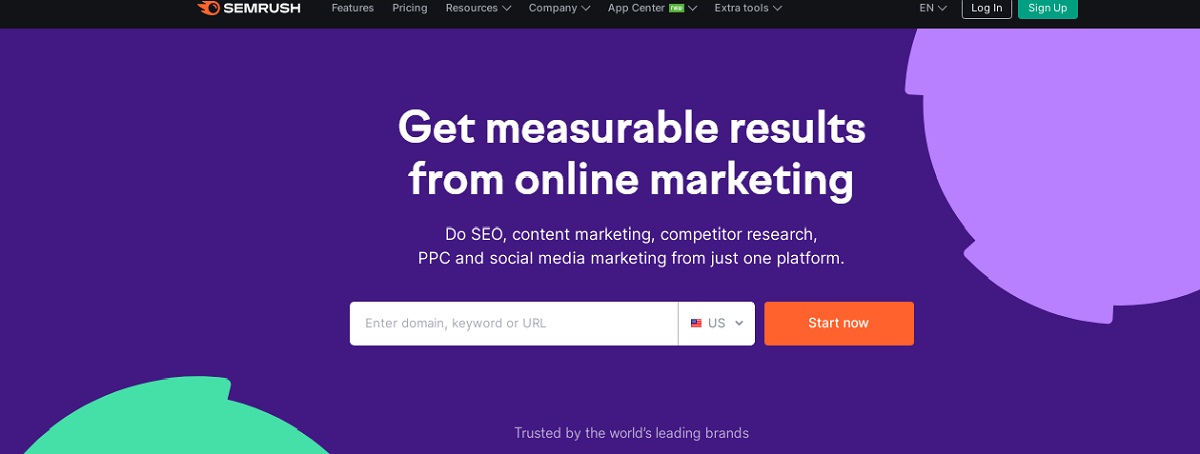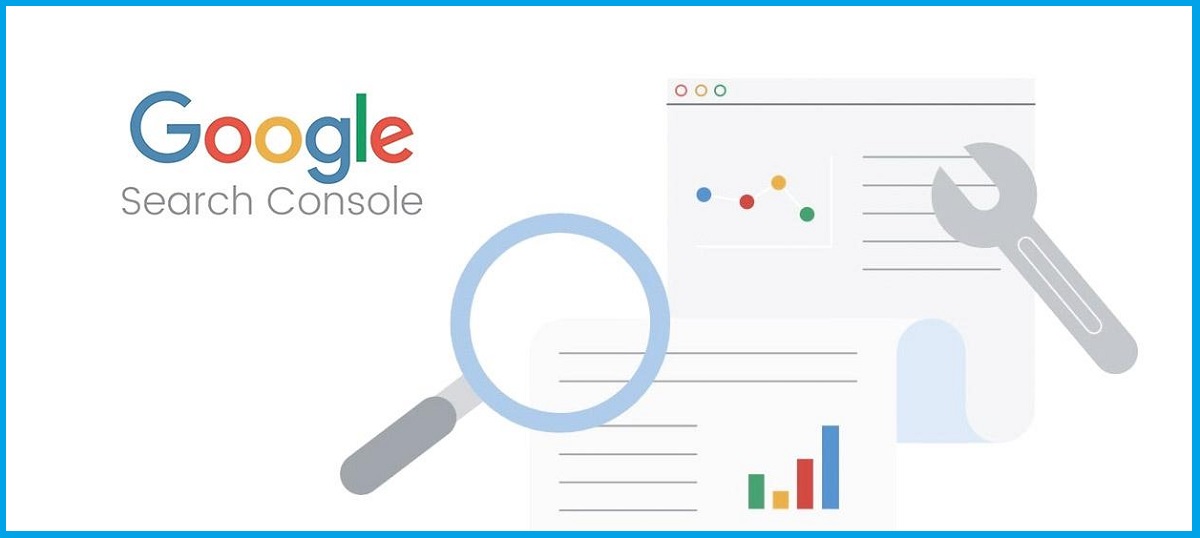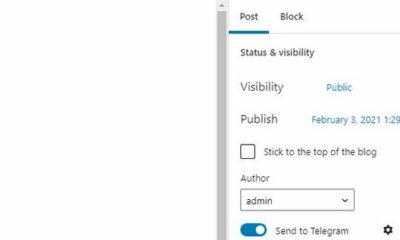AFFILIATE MARKETING
Your Guide to Branding and Trust in 2023

Authoritative websites aren’t just built; they’re cultivated with precision and insight.
In a digital landscape overflowing with content, standing out as a beacon of trust and expertise is your ticket to success.
In this guide, I’ll walk you through the central factors in creating a website that attracts visitors and earns their confidence.
Let’s dive into some tactics to transform your site from just another URL to an authority in your niche!
What is an Authoritative Website?
Authority is king!
In short, an authoritative website is a credible and reliable source of information. This credibility is often due to various factors – I’ll discuss them below.

Expertise
The website is created by individuals or organizations who are experts in their field. Their expertise is proven by their:
- Qualifications
- Experience
- Knowledge of the subject matter.
Accuracy and Reliability
The information provided is:
- Accurate
- Well-researched
- Trustworthy.
Authoritative sites will always cite their information sources. And they will base their content on verified facts or accepted research.
Objectivity
The site provides information in an unbiased manner.
Up-to-date Information
Authoritative websites update their content regularly to remain current and relevant.
Professionalism in Presentation
The website has a professional design and clear structure.
Recognition by Peers
Experts recommend authoritative sites.
Domain Authority
The website ranks high on the SERP (Search Engine Results Pages).
Examples of authoritative websites include:
- Academic journals
- Government websites
- Respected news organizations
- Professional institutions
- Associations in specific fields.
Why do Authoritative Websites Matter?
Having an authoritative website boosts brand recognition and influence. It helps to establish strong connections with the audience.
Authoritative websites:
- Rank higher in search engine results
- Have a high brand awareness, and
- Attract a larger audience.
And, of course, the significant traffic on your website generates more business leads.
Who Determines the Authority of Websites?
A combination of factors and entities determine the authority of websites. This includes search engines and users.
Understanding who and what determines website authority can help you improve your search rankings.
Visitors to Your Site
Your audience plays an important role in establishing your website’s authority. Their engagement patterns influence search engine perceptions.


A low bounce rate indicates that visitors are engaging with your content and staying for a long time.
Long engagement signals to search engines that your website is an authoritative source.
This extended engagement means that people find the content valuable and worthy of their attention.
Furthermore, social shares extend your content’s reach. It demonstrates trust as your audience shares your content on their feeds. This indicates the value and endorsement of your information.
So, visitor behavior is key to determining your website’s authority.
Search Engines
Search engines like Google determine a website’s authority based on their algorithms.
Those algorithms assess each page’s demonstrated experience, expertise, authoritativeness, and trustworthiness (E-E-A-T). Read Moz’s article about Google E-E-A-T to learn more.


They use specific metrics, not arbitrary decisions, to check and rank content.
One of the indicators is the number of high-quality backlinks you have. Quality backlinks are those coming from websites already considered authoritative.
Backlinks serve as endorsements, signaling the content’s value.
On-site Factors Influencing Authoritative Websites
This section explores the internal elements central to establishing and maintaining website authority.
I’ll examine how aspects of a website’s domain contribute to its perceived credibility and trustworthiness. These are factors like:
- Content quality
- Site structure
- User experience
- SEO.
Domain Authority
Don’t get confused by terms like DA, DR, and PS. “Domain Authority” is a metric used by MOZ to measure the credibility of a page.


In parallel to this metric, Ahrefs uses “Domain Rating” (DR).


And “Authority Score” (AS) is used by SEMrush.


The third-party search engine optimization tools mentioned above generate these metrics. Google does not use these as a signal to determine a website’s authority.
Depending on the SEO tool you use, you should aspire to a high value of the respective metric.
Why? Because this will show you how well your strategy of achieving high authority is working.
Domain Name and Extension
Your domain name significantly influences the perceived trustworthiness and professionalism of your website.
The domain name should be short, easy to read, and state the website’s topic or niche. For example:
- Techradar.com for technology
- Mediclinic.com for healthcare
- Searchenginejournal.com – Search Engine Journal
- Toyota.com for Toyota cars.
Domain extensions like .org and .gov are associated with government and non-profit organizations. They are often considered more authoritative.
A domain extension like .com is still generally acceptable for an authority website. But not extensions like .biz, .info, or .online, which seem less professional.
Website Content
Before I start talking about content, let’s take a step or two back.
- You must remember that Google is not ranking websites; Google is ranking pages.
- So, an authoritative site is an assembly of authoritative pages.
- An authoritative website has to focus on a specific topic. The website needs to match the interests and needs of its target audience. This means that it should provide relevant, useful information.
- Gaining authority is easier when you stick to a specific topic rather than covering a broad spectrum of topics.
Actually, what I’m talking about here is referred to as TOPICAL AUTHORITY. To achieve topical authority, it is wise to build a TOPICAL MAP. As I hinted above, your topical map is a collection of authoritative pages.
You can find many videos covering the subject of Topical Authority and Topical Maps. I suggest starting with one of the best ones by Matt Diggity.


By the way, Matt Diggity’s The Affiliate Lab is a great course if you are interested in affiliate marketing. It teaches you how to build, rank, and monetize affiliate marketing websites.
High-Quality Focused Content
Regularly publishing high-quality content significantly enhances a website’s authority.
Quality content boosts search engine rankings by attracting more organic traffic. Search engines favor sites offering valuable, current information. (Read about how content freshness affects Google ranking.)
Authoritative content establishes a website as trusted. This is especially true for sites providing expert advice.
A website can solidify its reputation and become a recognized authority in its field by consistently delivering accurate and valuable information.
The Credibility of the Author


The author of the content plays a crucial role in establishing the authority of a website. Look at the aspects they bring with them to the website:
- Expertise and Credentials. Expert authors are considered authoritative sources with relevant knowledge and qualifications.
- Quality of Content. High-quality, well-researched, and accurate content builds the website’s reputation.
- Consistency and Reliability. This fosters trust.
- Engagement in Community. Active participation in the field adds value and authenticity to the website.
- Personal Branding. An author’s brand can attract followers and add credibility to the website.
- Influence on SEO. Search engines consider the author’s reputation as a factor in determining the quality and relevance of content.
- Audience Connection and Loyalty. Authors who connect with their audience create loyal followers and repeat visitors.
As you can see, the author of the content influences everything from audience trust to search engine rankings and credibility.
Outbound Links
Outgoing links are important for backing up claims on your site. Always use an authoritative source to link to.


Your site should link to reliable and high-quality external websites to be seen as trustworthy.
If a blog links to unreliable or irrelevant sources, it won’t be trusted and can be considered spammy. A broken link can be even worse.
The links you choose to include on your website directly affect its credibility, so it’s important to pick them carefully.
The User Experience
An authority site that is easy to use and well-designed encourages user interaction.
Site Structure
Easy navigation leads to higher engagement and builds trust with users.
Breadcrumbs aid visitors in navigating a website. At the same time, Google uses them to display the page’s position within the site structure.
Website Speed
An authoritative website must be fast. You can’t let your potential visitor wait long for a page to load. They may just leave your site, which will negatively affect your bounce rate.
You don’t want a high bounce rate reflected in Google Analytics.
Get some tips from our article about slow WordPress sites.
User Trust and Engagement
Credible sources are crucial for establishing trust and thought leadership.
In the age of digital marketing, not everything online is accurate.
You must use reliable and factual references to gain your audience’s trust and be seen as a reliable content resource.
The credibility of a source depends on:
- Origin
- Intended audience
- Relevance to your topic.
Ensuring your sources are knowledgeable and authoritative on the subject is necessary.
This careful selection of sources significantly enhances the trustworthiness of your content. It also strengthens audience engagement. Additionally, it increases the credibility of your brand.
Off-Site Factors Influencing Authoritative Websites
Let’s explore the external elements that are central to establishing a website’s authority.
These factors range from inbound links to social media presence. They have a significant impact on a website’s credibility and reputation.
Use of Social Media


Social media contributes to the recognition of an authoritative website in several ways:
Increased Visibility and Traffic
Sharing content on social media platforms increases a website’s visibility. This, in turn, drives more traffic to the website and potentially boosts its authority.
Enhanced Engagement
Social media allows you to engage directly with your audience through:
Content Distribution and Reach
Social media platforms effectively distribute content to a broader audience. This expanded reach can attract new visitors to your website.
Building Brand Recognition
Consistent presence and content sharing on social media help build brand recognition.
Feedback and Improvement
Social media provides immediate feedback on content through user interactions.
SEO Benefits
Social signals can influence a website’s search engine rankings. Social media is not a search engine ranking factor. But it can increase a website’s visibility and backlink profile. This, in turn, affects search engine optimization.
Viral Potential
Viral content on social media can rapidly elevate a website’s authority. It showcases the ability to produce highly engaging, valuable content.
Social media amplifies a website’s:
- Reach
- Engagement, and
- Brand recognition.
These are key components in establishing and maintaining its status as an authoritative source.
Inbound Link Quality
Backlinks are inbound links from external websites. They are crucial for a website’s search engine ranking and authority.
Many authoritative backlinks confirm a website’s popularity and content quality.
The quality of backlinks is more important than the quantity. To impact positively on search engine rankings, authority links should be:
- From other reputable and high authority sites
- From relevant content.
If you have too many low-quality links from spammy websites it will negatively affect the credibility of your website.
So, acquiring high-quality, authoritative backlinks is key. They help to maintain a solid online presence and reputation.
But remember, backlinks (as we learned from Matt Diggity’s video earlier) are not the only way to establish authority.
Discover more tactics you can use in our article about off-page SEO techniques.
More Actions to Ensure Website Authority
The authority of a website is dynamic. Your competitors are continuously making efforts to take your spot at the top. Use Google Search Console daily to check your website performance.


Practice Good SEO
What do I mean by “good SEO”? Simply put, implementing SEO best practices.
This includes a broad range of activities, like:
- Making sure your content is useful and matches search intent.
- Offering a great user experience.
- Targeting one primary keyword per page.
- Optimizing your metadata.
- Building internal links (find out more about the benefits of internal linking).
- Earning valuable backlinks, and more.


SEMrush has all the features you need to practice effective SEO. It offers in-depth keyword research, competitor analysis, and site audits.
With SEMrush you can:
- Identify and target the most valuable keywords
- Understand competitors’ strategies
- Uncover technical SEO issues.
Its extensive database and user-friendly interface provide actionable insights for content optimization and link-building strategy.
Also, SEMrush’s regular updates and accurate data tracking align with the latest SEO trends and algorithm changes. It is an invaluable resource for staying ahead in the competitive digital marketing space.
Keep Tabs on Your Site’s Credibility
Here are some top tips to keep tabs on your site’s credibility.


Regularly Check Source Quality
Continuously test the quality of the sources cited by your website. Reliable websites often reference authoritative, reputable, and peer-reviewed sources.
Track Content Updates
Ensure you regularly update your website’s content and keep information current. Outdated information can diminish credibility.
Assess Author Expertise
Investigate the credentials and expertise of the authors contributing to your website. Credible sites feature content written by experts in their respective fields.
.
Review User Engagement and Feedback
Observe the level and nature of user engagement. High engagement levels with thoughtful, positive feedback can be indicators of credibility.
Analyze Your Backlink Profile
Regularly check your website’s backlink profile using SEO tools like SEMrush.
Authoritative Websites: In Conclusion
Establishing authority is the cornerstone of building trust online.
But remember that credibility is not an overnight achievement – it’s a continuous journey. The pillars that support your site’s authority are:
- Consistent, well-researched content
- Transparent communication
- A user-centered approach.
But remember that credibility is not an overnight achievement – it’s a continuous journey. The pillars that support your site’s authority are:
- Consistent, well-researched content
- Transparent communication
- A user-centered approach.
Put in place robust fact-checking, cite only reputable sources, and nurture your community. Provide engaging, informative content. Strive for authenticity, embrace feedback, and adapt to industry shifts. In doing so, you pave the way for your online presence to flourish as a trusted resource in your niche.
Are you a complete beginner? Do you need guidance to create a new website? If so, I suggest you sign up for the Authority Hacker TASS (The Authority Site System) course. Read our TASS review to learn more about it.
Wishing you great success in building your authority website!
AFFILIATE MARKETING
Site Traffic Down? Google Just Made Some Big Search Changes

Google is now doing the Googling for its expansive U.S. audience — and news publishers are facing potentially multi-billion-dollar consequences caused by the change.
Google announced on Tuesday that it is applying AI to high-impact elements of search, from AI summaries to pages of AI recommendations in clustered groups. AI summaries, which appear at the top of search results and neatly summarize content found across the web, started rolling out on Tuesday to all of Google’s 246 million unique U.S. users.
The AI summaries mean that websites across the board will get less traffic, as people simply search and read what the AI has generated without clicking on anything.
As newsrooms get less traffic and less money, their ability to create fresh content diminishes. At the same time, Google becomes less of a gateway to sources and more of a direct source Anastasia Kotsiubynska, Head of SEO at SE Ranking, shared with Entrepreneur.
“Most likely, there will still be misleading information in search results and hallucinations, and many users will probably use this information without double-checking,” Kotsiubynska cautioned.
Google I/O 2024 on May 14, 2024. (Photo by Christoph Dernbach/picture alliance via Getty Images)
Google’s search changes could cost websites $2 billion collectively; some could lose two-thirds of their traffic, according to data from media industry growth company Raptive.
“This will be catastrophic to our traffic, as marketed by Google to further satisfy user queries, leaving even less incentive to click through so that we can monetize our content,” Danielle Coffey, the chief executive of the News/Media Alliance, told CNN Business.
This is Search in the Gemini era. #GoogleIO pic.twitter.com/JxldNjbqyn
— Google (@Google) May 14, 2024
Google, a major tech company with over 90% of the global market share in search, can now frame search results however it wants with AI summaries, and pull from websites without guaranteeing site traffic or profit.
Related: Two Yale PhDs Are Trying to Make AI Hallucinate 10x Less
“AI Overviews relies on content creators’ intellectual property, which raises serious questions about compensation and fairness,” said Raptive in a statement.
Google does link to sites within its summary, citing its sources.
Unlike OpenAI, which has entered into deals with major publishers like Axel Springer and The Financial Times to compensate publishers for training AI on their articles and linking directly to them, Google has yet to publicly announce a similar deal with a major publication.
OpenAI has also earned the ire of some publishers, with the New York Times filing a lawsuit against the company over copyright grounds in December.
Google does have a $60 million deal with Reddit, announced in February, to train its AI on Reddit data.
AFFILIATE MARKETING
Carnival Cruise Line Installs Starlink Internet on Every Ship

It’s another massive milestone for SpaceX CEO Elon Musk.
On Tuesday, Carnival Cruises announced that 100% of its ships have officially installed high-speed internet from Musk’s Starlink.
The installation took place on 90-plus ships in Carnival’s global fleet and allows for more reliable Wi-Fi when onboard (especially during remote parts of the route) for passengers and helps the ship’s staff with improving “operational and communications capabilities,” per a release from Carnival.
Related: New Jersey Man Accused of Trafficking 675 Starlink Terminals
“Starlink has been a game-changer for the onboard connectivity experience our cruise lines deliver to their guests, and we’ve already seen a surge in guest satisfaction and positive feedback from the super-fast and reliable Wi-Fi service we provide onboard,” said Josh Weinstein, CEO of Carnival Corporation in a release. “We see this technology as a win-win-win – it provides our guests with more flexibility to stay as connected as they’d like on vacation, it allows our crew to stay in touch with friends and loved ones, and it enhances our onboard operational systems.”
The installment of Starlink on Carnival ships began in December 2022 and has now expanded to all of Carnival’s smaller companies, including Princess Cruises and Holland America Line.
Musk reposted the news with one word to share his sentiments: “Cool.”
— Elon Musk (@elonmusk) May 14, 2024
Royal Caribbean started installing Starlink on its ships in 2022 and as of February 2024, said that it was “currently in the process of upgrading more vessels” from VOOM internet to Starlink.
Carnival is coming off a strong Q1 2024, setting the record for first-quarter revenue at $5.4 billion, while bookings hit a record high — despite higher prices.
“This has been a fantastic start to the year. We delivered another strong quarter that outperformed guidance on every measure, while concluding a monumental wave season that achieved all-time high booking volumes at considerably higher prices,” Weinstein said at the time. “These results are a continuation of the strong demand we have been generating across our brands and all core deployments, leading to an upward revision of full year expectations by more than a point of incremental yield improvement and setting us up nicely to deliver a nearly double-digit improvement in net yields.”
Carnival was up nearly 41% year over year as of Tuesday afternoon.
SOCIAL
12 Proven Methods to Make Money Blogging in 2024

 This is a contributed article.
This is a contributed article.
The world of blogging continues to thrive in 2024, offering a compelling avenue for creative minds to share their knowledge, build an audience, and even turn their passion into profit. Whether you’re a seasoned blogger or just starting, there are numerous effective strategies to monetize your blog and achieve financial success. Here, we delve into 12 proven methods to make money blogging in 2024:
1. Embrace Niche Expertise:
Standing out in the vast blogosphere requires focus. Carving a niche allows you to cater to a specific audience with targeted content. This not only builds a loyal following but also positions you as an authority in your chosen field. Whether it’s gardening techniques, travel hacking tips, or the intricacies of cryptocurrency, delve deep into a subject you’re passionate and knowledgeable about. Targeted audiences are more receptive to monetization efforts, making them ideal for success.
2. Content is King (and Queen):
High-quality content remains the cornerstone of any successful blog. In 2024, readers crave informative, engaging, and well-written content that solves their problems, answers their questions, or entertains them. Invest time in crafting valuable blog posts, articles, or videos that resonate with your target audience.
- Focus on evergreen content: Create content that remains relevant for a long time, attracting consistent traffic and boosting your earning potential.
- Incorporate multimedia: Spice up your content with captivating images, infographics, or even videos to enhance reader engagement and improve SEO.
- Maintain consistency: Develop a regular publishing schedule to build anticipation and keep your audience coming back for more.
3. The Power of SEO:
Search Engine Optimization (SEO) ensures your blog ranks high in search engine results for relevant keywords. This increases organic traffic, the lifeblood of any monetization strategy.
- Keyword research: Use keyword research tools to identify terms your target audience searches for. Strategically incorporate these keywords into your content naturally.
- Technical SEO: Optimize your blog’s loading speed, mobile responsiveness, and overall technical aspects to improve search engine ranking.
- Backlink building: Encourage other websites to link back to your content, boosting your blog’s authority in the eyes of search engines.
4. Monetization Magic: Affiliate Marketing
Affiliate marketing allows you to earn commissions by promoting other companies’ products or services. When a reader clicks on your affiliate link and makes a purchase, you get a commission.
- Choose relevant affiliates: Promote products or services that align with your niche and resonate with your audience.
- Transparency is key: Disclose your affiliate relationships clearly to your readers and build trust.
- Integrate strategically: Don’t just bombard readers with links. Weave affiliate promotions naturally into your content, highlighting the value proposition.
5. Display Advertising: A Classic Approach
Display advertising involves placing banner ads, text ads, or other visual elements on your blog. When a reader clicks on an ad, you earn revenue.
- Choose reputable ad networks: Partner with established ad networks that offer competitive rates and relevant ads for your audience.
- Strategic ad placement: Place ads thoughtfully, avoiding an overwhelming experience for readers.
- Track your performance: Monitor ad clicks and conversions to measure the effectiveness of your ad placements and optimize for better results.
6. Offer Premium Content:
Providing exclusive, in-depth content behind a paywall can generate additional income. This could be premium blog posts, ebooks, online courses, or webinars.
- Deliver exceptional value: Ensure your premium content offers significant value that justifies the price tag.
- Multiple pricing options: Consider offering tiered subscription plans to cater to different audience needs and budgets.
- Promote effectively: Highlight the benefits of your premium content and encourage readers to subscribe.
7. Coaching and Consulting:
Leverage your expertise by offering coaching or consulting services related to your niche. Readers who find your content valuable may be interested in personalized guidance.
- Position yourself as an expert: Showcase your qualifications, experience, and client testimonials to build trust and establish your credibility.
- Offer free consultations: Provide a limited free consultation to potential clients, allowing them to experience your expertise firsthand.
- Develop clear packages: Outline different coaching or consulting packages with varying time commitments and pricing structures.
8. The Power of Community: Online Events and Webinars
Host online events or webinars related to your niche. These events offer valuable content while also providing an opportunity to promote other monetization avenues.
- Interactive and engaging: Structure your online events to be interactive with polls, Q&A sessions, or live chats. Click here to learn more about image marketing with Q&A sessions and live chats.
9. Embrace the Power of Email Marketing:
Building an email list allows you to foster stronger relationships with your audience and promote your content and offerings directly.
- Offer valuable incentives: Encourage readers to subscribe by offering exclusive content, discounts, or early access to new products.
- Segmentation is key: Segment your email list based on reader interests to send targeted campaigns that resonate more effectively.
- Regular communication: Maintain consistent communication with your subscribers through engaging newsletters or updates.
10. Sell Your Own Products:
Take your expertise to the next level by creating and selling your own products. This could be physical merchandise, digital downloads, or even printables related to your niche.
- Identify audience needs: Develop products that address the specific needs and desires of your target audience.
- High-quality offerings: Invest in creating high-quality products that offer exceptional value and user experience.
- Utilize multiple platforms: Sell your products through your blog, online marketplaces, or even social media platforms.
11. Sponsorships and Brand Collaborations:
Partner with brands or businesses relevant to your niche for sponsored content or collaborations. This can be a lucrative way to leverage your audience and generate income.
- Maintain editorial control: While working with sponsors, ensure you retain editorial control to maintain your blog’s authenticity and audience trust.
- Disclosures are essential: Clearly disclose sponsored content to readers, upholding transparency and ethical practices.
- Align with your niche: Partner with brands that complement your content and resonate with your audience.
12. Freelancing and Paid Writing Opportunities:
Your blog can serve as a springboard for freelance writing opportunities. Showcase your writing skills and expertise through your blog content, attracting potential clients.
- Target relevant publications: Identify online publications, websites, or magazines related to your niche and pitch your writing services.
- High-quality samples: Include high-quality blog posts from your site as writing samples when pitching to potential clients.
- Develop strong writing skills: Continuously hone your writing skills and stay updated on current trends in your niche to deliver exceptional work.
Conclusion:
Building a successful blog that generates income requires dedication, strategic planning, and high-quality content. In today’s digital age, there are numerous opportunities to make money online through blogging. By utilizing a combination of methods such as affiliate marketing, sponsored content, and selling digital products or services, you can leverage your blog’s potential and achieve financial success.
Remember, consistency in posting, engaging with your audience, and staying adaptable to trends are key to thriving in the ever-evolving blogosphere. Embrace new strategies, refine your approaches, and always keep your readers at the forefront of your content creation journey. With dedication and the right approach, your blog has the potential to become a valuable source of income and a platform for sharing your knowledge and passion with the world, making money online while doing what you love.
Image Credit: DepositPhotos
-

 MARKETING3 days ago
MARKETING3 days ago18 Events and Conferences for Black Entrepreneurs in 2024
-

 WORDPRESS6 days ago
WORDPRESS6 days agoBest WordPress Plugins of All Time: Updated List for 2024
-

 MARKETING5 days ago
MARKETING5 days agoAdvertising on Hulu: Ad Formats, Examples & Tips
-

 MARKETING6 days ago
MARKETING6 days agoUpdates to data build service for better developer experiences
-

 WORDPRESS6 days ago
WORDPRESS6 days agoShopify Could Be Undervalued Based On A Long-Term Horizon
-

 PPC6 days ago
PPC6 days agoLow Risk, High Reward YouTube Ads alexking
-

 WORDPRESS4 days ago
WORDPRESS4 days ago5 Must See Telegram Plugins for WooCommerce
-

 MARKETING4 days ago
MARKETING4 days agoIAB Podcast Upfront highlights rebounding audiences and increased innovation















